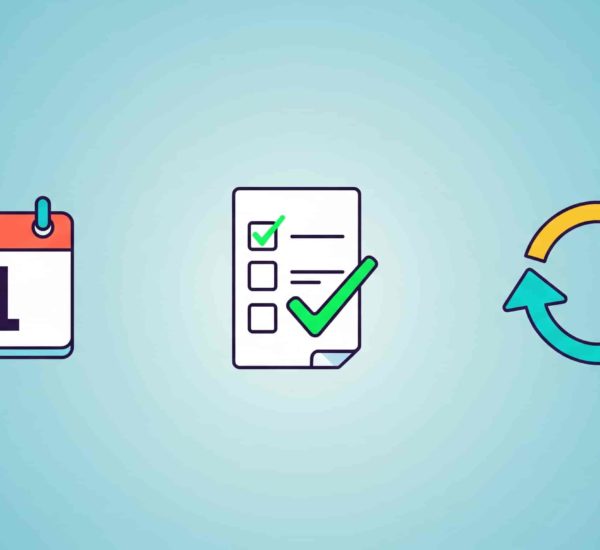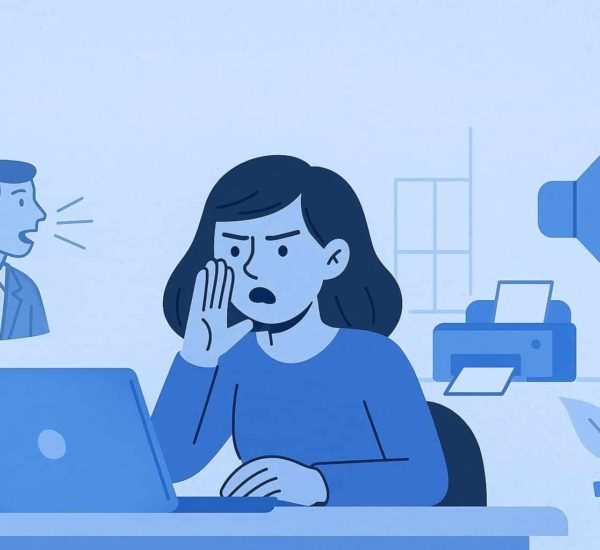Ever find yourself mentally replaying a half-finished email, an unanswered Slack message, or a project left hanging? That’s the Zeigarnik Effect at work—the psychological phenomenon where unfinished tasks linger in your mind, creating mental clutter, stress, and fatigue.
In today’s fast-paced work environment, employees are constantly juggling competing priorities, shifting deadlines, and never-ending to-do lists. Over time, this mental overload leads to , decreased productivity, and decision fatigue, making it harder to stay focused and engaged.
But why does the brain fixate on incomplete work? And more importantly, how can organizations help employees manage unfinished tasks to prevent exhaustion and improve well-being? Let’s dive into the science behind the Zeigarnik Effect—and explore strategies to keep mental energy intact.
Why Your Brain Obsessively Fixates on Unfinished Tasks
Picture this: You’re wrapping up your workday, but instead of feeling accomplished, your mind is racing through half-written reports, unresolved Slack messages, and that meeting follow-up you never got to. No matter how much you try to relax, your brain won’t let it go.
That’s the Zeigarnik Effect in action—a psychological quirk discovered by Russian psychologist Bluma Zeigarnik in the 1920s. Her research found that people remember unfinished tasks better than completed ones, causing a nagging sense of mental tension until the task is resolved.
This was great for survival back in the day—your brain made sure you didn’t forget to hunt, gather, or run from danger. But in today’s modern workplace, where to-do lists are endless and notifications never stop, it turns into a nonstop mental energy drain.
The Hidden Cost of Unfinished Work
The longer tasks remain unfinished, the more they:
✅ Steal your focus—Your mind keeps looping back to them, making deep work nearly impossible.
✅ Increase stress and burnout—The constant tension of open loops wears down mental energy.
✅ Kill productivity—Instead of finishing one task, you’re stuck juggling multiple loose ends.
So, how do you stop the cycle and reclaim your mental clarity? Keep reading—because the fix is surprisingly simple.

Breaking the Loop: How to Outsmart the Zeigarnik Effect
Most productivity advice says, “Just finish your tasks!”—as if that’s realistic in a world of endless emails, back-to-back meetings, and constant interruptions. The real problem isn’t unfinished work itself—it’s how your brain reacts to it.
To break free from the Zeigarnik Effect, you don’t need to complete everything at once. Instead, you need to trick your brain into feeling like the task is handled—even when it’s not.
The Brain Offload Method
Your brain clings to unfinished tasks because it’s afraid of forgetting them. The fix? Write them down in a trusted system—but with a twist. Instead of a basic to-do list, use a “next action” approach:
- Instead of “Finish report”, write “Draft three key points for the report intro by 2 PM.”
- Instead of “Respond to client”, write “Send a follow-up question to the client about project scope.”
By breaking tasks into bite-sized, actionable steps, your brain stops treating them as unsolvable problems, and the tension eases instantly.
The Two-Minute Progress Rule
If a task keeps nagging at you, it’s often because your brain lacks closure. The best way to interrupt this cycle is to make just two minutes of progress.
- Reply to an email with “Let me gather my notes, I’ll update you tomorrow.”
- Outline the first sentence of your presentation.
- Open the document and jot down one bullet point.
That small action signals to your brain that the task is in motion, stopping it from hijacking your mental energy.
The Not-Now System
Some tasks stay on your mind simply because you haven’t told them where to go. Instead of letting them float around, assign them a specific time and place:
- Move them to a “Later List” for things you’ll get to, but not now.
- Set a Slack reminder to follow up later.
- Block 15 minutes on your calendar for deep work.
Once your brain knows a task is scheduled, it stops fixating on it.
Your Mind Is Not Your Inbox—Take Control
The Zeigarnik Effect isn’t the enemy—unmanaged mental clutter is. By using smart task-handling techniques, you can trick your brain into relaxing, reclaim your focus, and avoid burnout—without working longer hours.
Try one of these methods today, and notice how quickly the mental weight lifts.
The Science Behind the Zeigarnik Effect
The Zeigarnik Effect isn’t just a productivity buzzword—it’s a well-documented psychological phenomenon. In the 1920s, Russian psychologist Bluma Zeigarnik discovered that unfinished tasks stick in our minds more than completed ones. In a study, participants were asked to complete a series of puzzles, but some were interrupted before finishing. Later, those who were interrupted remembered their tasks far better than those who completed them without disruption (source).
Why Does This Happen?
Neurologists suggest that unfinished tasks create cognitive tension, keeping the brain in a heightened state of alertness (source). This effect is rooted in how memory works—our brains prioritize incomplete information because it might require action. While this was useful for survival, in a modern work environment, it often leads to stress and mental fatigue.
Research has also linked the Zeigarnik Effect to procrastination and anxiety. Studies show that people who frequently leave tasks incomplete experience higher levels of intrusive thoughts about what they haven’t finished (source). This constant mental load can reduce focus, drain cognitive resources, and make it harder to switch off after work.
How to Use This Knowledge to Your Advantage
Rather than trying to eliminate the Zeigarnik Effect, experts recommend using it strategically:
- Set up progress markers: Research shows that writing down the next step of a task reduces the brain’s need to keep it top of mind (source).
- Use planned interruptions: Intentionally pausing a task at a key moment can help with recall and motivation when you return to it (source).
- Give unfinished tasks a mental parking spot: The simple act of scheduling a time to revisit a task can stop it from draining your energy (source).
The Workplace Cost of Unfinished Tasks (Why This Matters for Leaders & Teams)
Most discussions on the Zeigarnik Effect focus on personal productivity—how individuals struggle with unfinished tasks. But in a workplace setting, this cognitive bias doesn’t just drain one employee’s mental energy; it creates organization-wide inefficiencies that slow down decision-making, increase burnout, and reduce overall team effectiveness.
1. The Hidden Impact on Productivity
Unfinished work has a ripple effect. When tasks linger open-ended:
- Employees feel mentally burdened, leading to decision fatigue and slower execution.
- Teams struggle with project bottlenecks, as tasks sit in limbo, waiting for mental bandwidth.
- Managers experience “follow-up fatigue,” constantly chasing incomplete work.
According to research from the American Psychological Association, the mental strain caused by unfinished tasks can reduce productivity by up to 40%, as employees struggle to focus on the work that actually moves the needle.
2. Unfinished Work Creates Employee Disengagement
When employees are constantly juggling half-finished projects, their sense of accomplishment drops. Instead of feeling like they’re making progress, they feel like they’re always behind. This leads to:
- Higher stress levels and burnout, especially in high-paced work environments.
- A drop in motivation and engagement, as employees feel like they’re stuck in an endless loop of to-dos.
- Increased turnover risk, as lingering tasks contribute to an overwhelming work culture.
HR leaders should recognize that unfinished tasks aren’t just an individual time-management problem—they’re an organizational issue that affects employee satisfaction and retention.
3. How Leaders Can Reduce the Burden of Unfinished Work
Instead of pushing for more productivity tools or tighter deadlines, leaders need to rethink how work is structured. Some strategies include:
✅ Prioritization frameworks: Using methods like Eisenhower Matrix or OKRs to de-prioritize non-urgent tasks instead of leaving them half-finished.
✅ Psychological closure techniques: Encouraging employees to set clear stopping points for unfinished tasks to reduce mental carryover.
✅ Reducing multitasking: Studies show that when employees work on too many projects at once, the cognitive load from unfinished tasks increases dramatically.
By designing a workplace that acknowledges the mental cost of unfinished work, businesses can boost team efficiency, employee engagement, and overall workplace well-being.
How to Apply the Zeigarnik Effect in the Workplace
Understanding the Zeigarnik Effect is one thing—using it to improve workplace productivity is another. HR leaders need practical strategies that help employees manage unfinished tasks without increasing stress or burnout. Here’s how to make it work in your organization:
1. Encourage Task Breakdowns
Large projects can feel overwhelming, leading employees to procrastinate or lose focus. Breaking work into smaller, clearly defined steps creates natural stopping points while keeping momentum high. This reduces cognitive overload and makes it easier for employees to pick up where they left off.
2. Use Task Queues and Reminders
One of the best ways to prevent mental energy drain is to offload unfinished tasks from memory into a structured system. Task management tools, automated Slack reminders, and digital to-do lists can help employees track their progress without constantly worrying about what’s left undone.
3. Create a ‘Work in Progress’ Culture
Many employees feel pressure to finish everything in one go, leading to stress and burnout. Encouraging a healthy approach to incomplete work—where employees can pause, reflect, and return with fresh energy—improves both productivity and well-being. Managers should reinforce the idea that unfinished tasks aren’t failures but part of an effective workflow.
4. Leverage Smart Scheduling Tools
HR teams can implement automated scheduling and task management solutions to help employees organize their workload without constant mental strain. Tools like AttendanceBot allow teams to set priorities, track tasks, and receive gentle reminders, ensuring important work isn’t forgotten while avoiding cognitive overload.
5. Train Managers on Cognitive Workload
Frontline managers play a critical role in how employees approach unfinished work. Providing training on the psychology of focus and productivity can help leaders set better expectations, reduce unnecessary task-switching, and create an environment that maximizes energy without increasing burnout.
By integrating these strategies, HR leaders can improve employee focus, reduce stress, and enhance overall productivity—all without requiring massive changes to existing workflows. Want to see how automation can help? Learn more about how AttendanceBot supports smart task management.

Measuring the Impact of the Zeigarnik Effect on Productivity
Understanding the Zeigarnik Effect is one thing—proving its value to leadership is another. To justify investing in strategies that leverage this principle, HR leaders must track key productivity and well-being metrics.
Key Metrics to Monitor:
- Task Completion Rates – Are employees finishing more tasks after breaking them into smaller steps?
- Focus and Engagement Scores – Use pulse surveys or productivity tools to gauge whether employees feel more in control of their workload.
- Burnout and Stress Levels – Monitor absenteeism, turnover rates, and employee feedback on mental fatigue.
- Time Spent on Incomplete Tasks – Identify bottlenecks and assess whether employees are struggling with lingering projects.
How to Track These Metrics:
- Use productivity tracking software like AttendanceBot to analyze task completion trends.
- Conduct regular check-ins and surveys to measure engagement and workload perception.
- Compare before-and-after data when implementing Zeigarnik-based strategies to show measurable improvement.
By focusing on these metrics, HR leaders can make a compelling case for why managing unfinished tasks is critical to employee well-being and business performance.
Conclusion
Unfinished tasks drain mental energy, but with the right strategies, HR leaders can turn this psychological effect into a productivity advantage. By tracking the right metrics, companies can ensure that these efforts translate into real-world impact.



